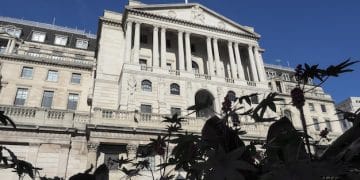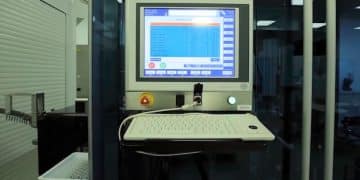Understanding the Role of Super PACs in 2026 Midterm Elections
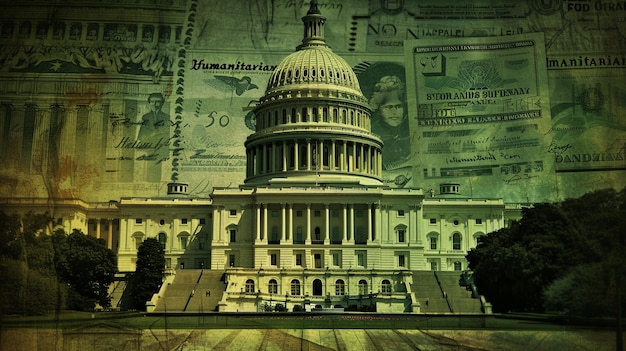
Super PACs, or independent expenditure-only committees, play a significant role in the 2026 midterm elections by raising and spending unlimited sums of money to overtly advocate for or against political candidates, influencing voters and shaping election outcomes.
The 2026 midterm elections are on the horizon, and discussions are heating up about the various factors that will influence their outcome. Among these, the role of Super PACs in the 2026 midterm elections stands out as a particularly powerful, and often controversial, force. Understanding their influence is crucial for anyone seeking to grasp the dynamics of contemporary American politics.
What are Super PACs?
Super PACs, formally known as independent expenditure-only committees, emerged as a result of the 2010 Citizens United Supreme Court decision. This ruling, along with subsequent court decisions, paved the way for these entities to raise and spend unlimited amounts of money to support or oppose political candidates. However, they are legally prohibited from directly coordinating with the candidates or their campaigns.
Key Characteristics of Super PACs
Unlike traditional political action committees (PACs), Super PACs operate under different rules that allow for greater financial flexibility. This distinction is critical in understanding their impact on election cycles.
- Unlimited Contributions: Super PACs can accept unlimited contributions from individuals, corporations, and unions.
- Independent Expenditures: They can spend unlimited amounts to advocate for or against candidates through advertising, media campaigns, and other means.
- No Direct Coordination: Super PACs are not allowed to directly coordinate their activities with the campaigns they support.
The lack of coordination is a crucial legal requirement, but it doesn’t prevent Super PACs from significantly influencing the narrative around candidates and issues. They often run attack ads or promote a particular candidate’s strengths, shaping public perception in ways that traditional campaigns might be hesitant to do.
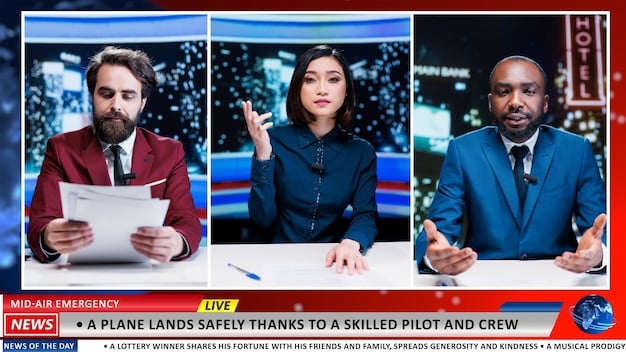
The emergence of Super PACs has fundamentally altered the landscape of political fundraising and campaign strategy. With the ability to amass and deploy vast sums of money, these groups can significantly amplify certain voices and messages, potentially drowning out others in the process.
In essence, Super PACs function as powerful independent actors in the political arena, capable of shaping election outcomes through their financial muscle. Understanding their origins and characteristics is the first step in assessing their role in the 2026 midterm elections.
The Legal and Regulatory Landscape
The operation and influence of Super PACs are heavily shaped by the legal and regulatory framework that governs campaign finance in the United States. Understanding these rules is essential to grasping the full scope of their impact.
Citizens United and its Aftermath
The Citizens United v. Federal Election Commission Supreme Court case in 2010 was a watershed moment. The ruling essentially stated that corporations and unions have the same First Amendment rights as individuals, allowing them to spend unlimited money on political advertising. This decision formed the basis for the creation of Super PACs.
Following Citizens United, the SpeechNow.org v. FEC case further clarified the rules, stating that if an organization only makes independent expenditures (i.e., does not directly contribute to candidates), it could accept unlimited contributions.
Current Regulations and Oversight
Despite their independence, Super PACs are still subject to certain regulations. They are required to disclose their donors to the Federal Election Commission (FEC), providing a level of transparency, though the information can often be delayed and difficult to parse.
- Disclosure Requirements: Super PACs must periodically report their donors and expenditures to the FEC.
- Independent Expenditure Rules: They must operate independently of the campaigns they support, without direct coordination.
- FEC Oversight: The FEC is responsible for enforcing campaign finance laws, though it often faces challenges due to partisan gridlock and limited resources.
The legal framework surrounding Super PACs is constantly evolving, with ongoing debates about campaign finance reform and the role of money in politics. Understanding the current regulations and the history behind them is crucial for analyzing their influence on elections.
The regulatory landscape serves as both a constraint and an enabler for Super PACs. While rules mandate disclosure and independence, the lack of limits on spending allows them to exert significant influence. As the 2026 midterm elections approach, these legal dynamics will continue to play a crucial role in shaping the political environment.
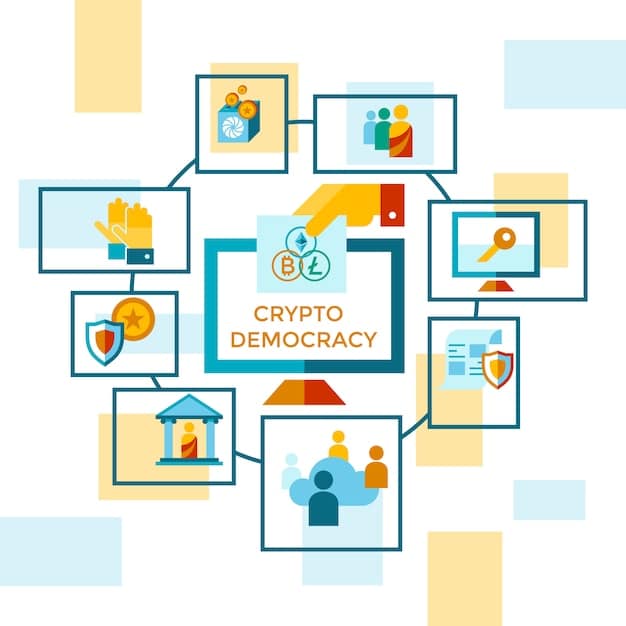
Super PACs and Campaign Strategy
Super PACs have become integral to modern campaign strategy, offering a powerful tool for influencing voters and shaping election outcomes. Understanding how these groups operate within the broader campaign ecosystem is crucial.
Utilizing Independent Expenditures
One of the primary ways Super PACs influence campaigns is through independent expenditures. These expenditures can take many forms, including television ads, online advertising, direct mail, and get-out-the-vote efforts. Because they operate independently, Super PACs can often engage in tactics that campaigns themselves might avoid.
For instance, Super PACs are often more willing to run negative ads attacking an opponent, allowing the candidate’s official campaign to maintain a more positive image. This division of labor can be a strategic advantage.
Coordination Challenges and Workarounds
Although Super PACs are legally prohibited from coordinating directly with campaigns, there are often ways to navigate these restrictions. For example, individuals who previously worked for a campaign can join a Super PAC, bringing with them valuable insights and knowledge. Additionally, public statements and shared data can indirectly guide Super PAC strategies.
- Messaging Alignment: Super PACs often focus on amplifying themes and narratives that are already part of the candidate’s platform.
- Targeted Advertising: They can target specific demographic groups or geographic areas with tailored messaging, supplementing the campaign’s broader efforts.
- Rapid Response: Super PACs can quickly respond to attacks or emerging issues, providing a flexible and agile counterweight to the opposition.
The relationship between campaigns and Super PACs is often complex and nuanced, involving a delicate balance between independence and strategic alignment. Understanding these dynamics is essential for assessing the true impact of Super PACs on election outcomes.
Super PACs play a pivotal role in shaping the narrative, mobilizing voters, and influencing the overall trajectory of a campaign. Their ability to operate independently while strategically supporting a candidate makes them a formidable force in the modern political landscape.
The Impact on the 2026 Midterm Elections
As the 2026 midterm elections approach, Super PACs are poised to play a significant role in shaping the political landscape. Their ability to raise and spend vast sums of money will undoubtedly impact candidate visibility, voter perceptions, and ultimately, election results.
Key Races and Spending Projections
Several key races in the 2026 midterms are likely to attract significant Super PAC spending. These may include competitive Senate or House races, as well as gubernatorial elections in closely contested states. Spending projections are often difficult to predict with certainty, but historical trends suggest that Super PACs will continue to invest heavily in these high-stakes contests.
For example, races where incumbents are vulnerable or where there is a clear ideological divide are particularly likely to attract Super PAC attention.
Potential Influence on Voter Turnout
Super PACs can influence voter turnout in various ways. Through targeted advertising, they can sway undecided voters or energize specific segments of the electorate. Additionally, they can fund get-out-the-vote efforts, which can be particularly effective in boosting turnout among key demographic groups.
- Mobilizing Base Voters: Super PACs can use emotionally charged messaging to energize a candidate’s base and encourage them to vote.
- Persuading Undecided Voters: Through persuasive advertising, they can sway undecided voters in favor of a particular candidate or issue.
- Suppressing Voter Turnout: In some cases, Super PACs may attempt to suppress voter turnout by spreading misinformation or discouraging certain groups from voting.
The impact of Super PACs on voter turnout is often debated, but there is little doubt that their activities can significantly influence who shows up at the polls. Understanding these dynamics is crucial for anyone seeking to analyze the outcome of the 2026 midterm elections.
The 2026 midterm elections are shaping up to be a highly competitive and closely watched contest. Super PACs will undoubtedly play a significant role in shaping the narrative and influencing voter behavior. Their impact will be felt in key races across the country, making it essential to understand their strategies and potential effects.
Criticisms and Controversies
Super PACs are not without their critics. Their existence and influence have sparked numerous controversies and debates about the role of money in politics. Understanding these criticisms is essential for a balanced perspective on their impact.
Concerns About Undue Influence
One of the most common criticisms of Super PACs is that they give undue influence to wealthy donors and special interests. The ability to contribute unlimited sums of money allows these groups to amplify their voices and potentially shape policy outcomes in their favor.
Critics argue that this unequal distribution of influence undermines the democratic process and makes it more difficult for ordinary citizens to have their voices heard.
Transparency Issues
While Super PACs are required to disclose their donors, the timing and nature of these disclosures can be problematic. Often, the information is released only after an election has already taken place, making it difficult to hold donors accountable for their spending.
- Delayed Disclosure: Reporting requirements often allow Super PACs to delay disclosing their donors until well after an election, reducing transparency.
- “Dark Money” Groups: Some Super PACs receive funding from non-profit organizations that do not have to disclose their donors, creating a layer of secrecy.
- Difficulty Tracing Funds: The complex web of financial transactions can make it difficult to trace the ultimate source of funding for Super PAC activities.
The lack of timely and comprehensive transparency raises concerns about the potential for hidden agendas and undue influence in the political process.
The controversies surrounding Super PACs highlight the ongoing debate about the role of money in politics and the need for campaign finance reform. Their impact on elections is undeniable, but questions remain about whether their influence is ultimately beneficial for democracy.
Future of Super PACs and Campaign Finance
The future of Super PACs and campaign finance remains uncertain, with ongoing debates about potential reforms and the evolving role of money in politics. Understanding these trends is crucial for anticipating their impact on future elections.
Potential Reforms and Legislation
Numerous proposals have been put forward to reform campaign finance laws and address the influence of Super PACs. These include efforts to overturn the Citizens United decision, limit campaign spending, and increase transparency.
However, these proposals often face significant political obstacles, as they tend to be highly partisan and controversial.
The Role of Small-Dollar Donors
One potential counterweight to the influence of Super PACs is the rise of small-dollar donors. Online fundraising platforms have made it easier for candidates to raise money from a large number of individuals, reducing their reliance on wealthy donors and Super PACs.
- Grassroots Funding: Small-dollar donations can provide a more democratic and participatory source of funding for campaigns.
- Increased Accountability: Candidates who rely on small-dollar donors may be more accountable to their constituents than those who depend on wealthy donors.
- Leveling the Playing Field: Small-dollar fundraising can help level the playing field for candidates who lack access to traditional sources of campaign funding.
The future of campaign finance will likely depend on the interplay between Super PACs, small-dollar donors, and ongoing efforts to reform the system. Understanding these dynamics is essential for anyone seeking to shape the future of American politics.
As the political landscape continues to evolve, Super PACs will remain a significant force in shaping elections. Whether their influence will be curtailed by reforms or amplified by future court decisions remains to be seen. The ongoing debate about campaign finance will continue to shape the future of American democracy.
| Key Point | Brief Description |
|---|---|
| 💰 Super PAC Definition | Independent expenditure-only committees that can raise unlimited funds. |
| ⚖️ Legal Basis | Stem from the Citizens United ruling, allowing unlimited spending. |
| 📢 Campaign Influence | Shape voter perceptions via ads & campaign strategies. |
| 📰 Criticisms | Concerns over undue influence & transparency issues. |
Frequently Asked Questions
▼
A Super PAC is a type of independent political committee which can raise unlimited sums of money from corporations, unions, and individuals but is not permitted to contribute to or coordinate directly with parties or candidates.
▼
Traditional PACs are subject to contribution limits and can donate directly to candidates, whereas Super PACs cannot. However, Super PACs can accept unlimited contributions and make unlimited independent expenditures.
▼
The Citizens United Supreme Court decision in 2010 paved the way for the creation of Super PACs by asserting that corporations and unions have the same First Amendment rights as individuals, allowing independent expenditures.
▼
Yes, Super PACs can influence voter turnout through targeted advertising, get-out-the-vote efforts, and persuasive messaging aimed at energizing a candidate’s base or swaying undecided voters.
▼
Common criticisms include concerns about undue influence from wealthy donors, transparency issues related to disclosure of donors, and the potential for Super PACs to distort or manipulate the political landscape.
Conclusion
Understanding the role of Super PACs in the 2026 midterm elections is essential for anyone following American politics. These independent expenditure-only committees play a significant role in shaping the political landscape, influencing voters, and impacting election outcomes. While they operate within a complex legal and regulatory framework, their ability to raise and spend unlimited sums of money makes them a powerful force in contemporary elections. As the 2026 midterms approach, it is crucial to stay informed about their activities and their potential impact on the democratic process.
